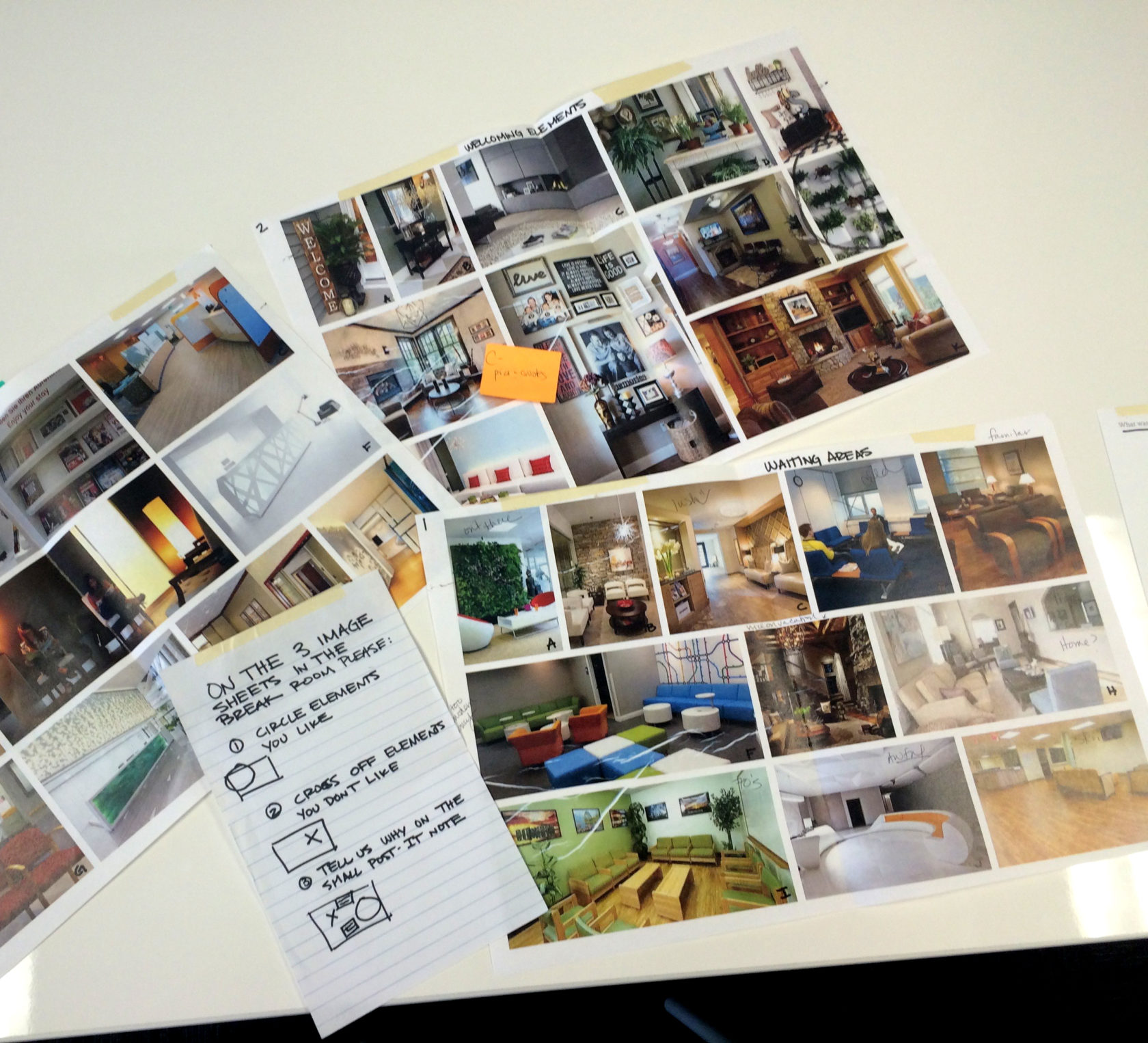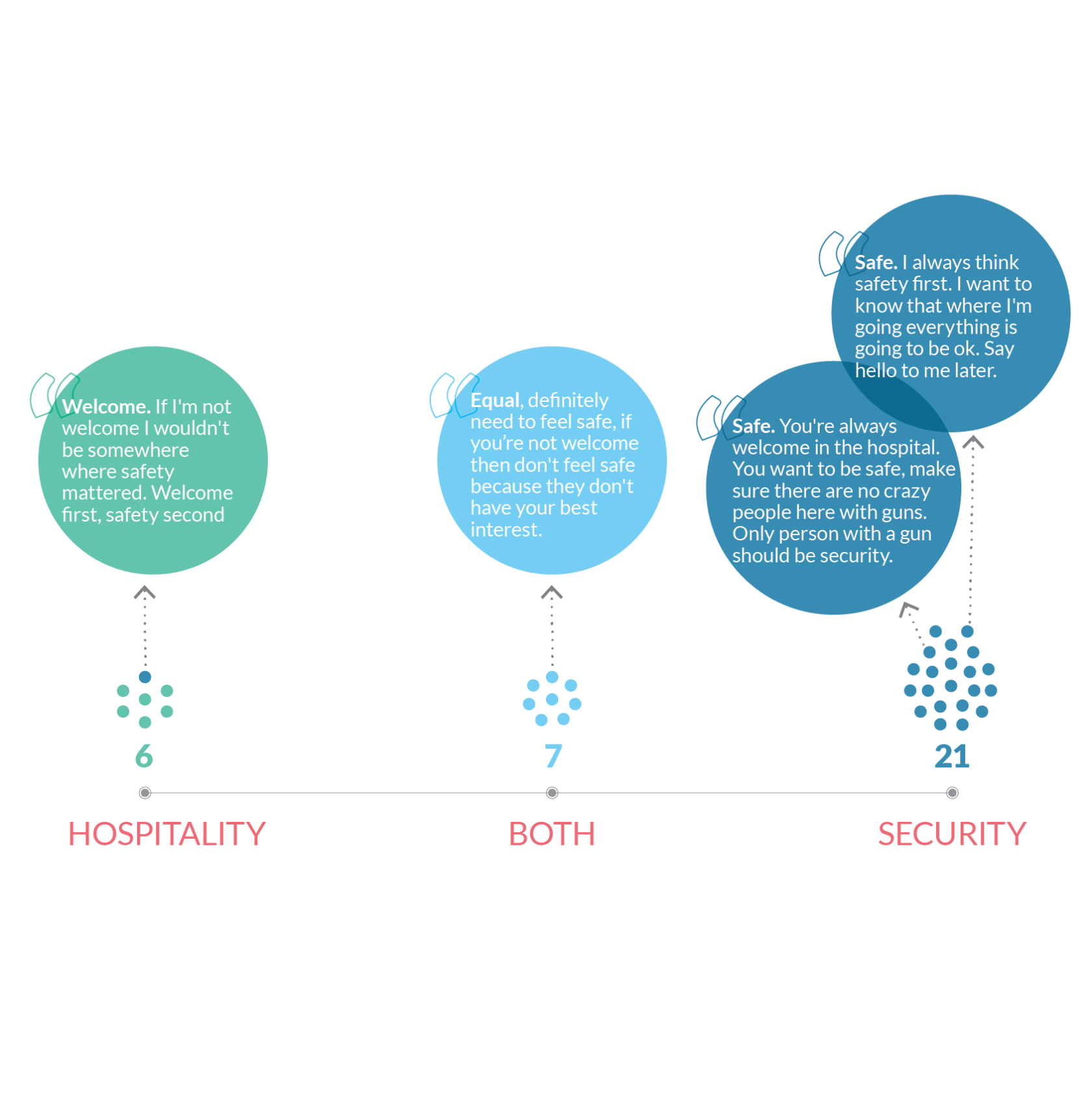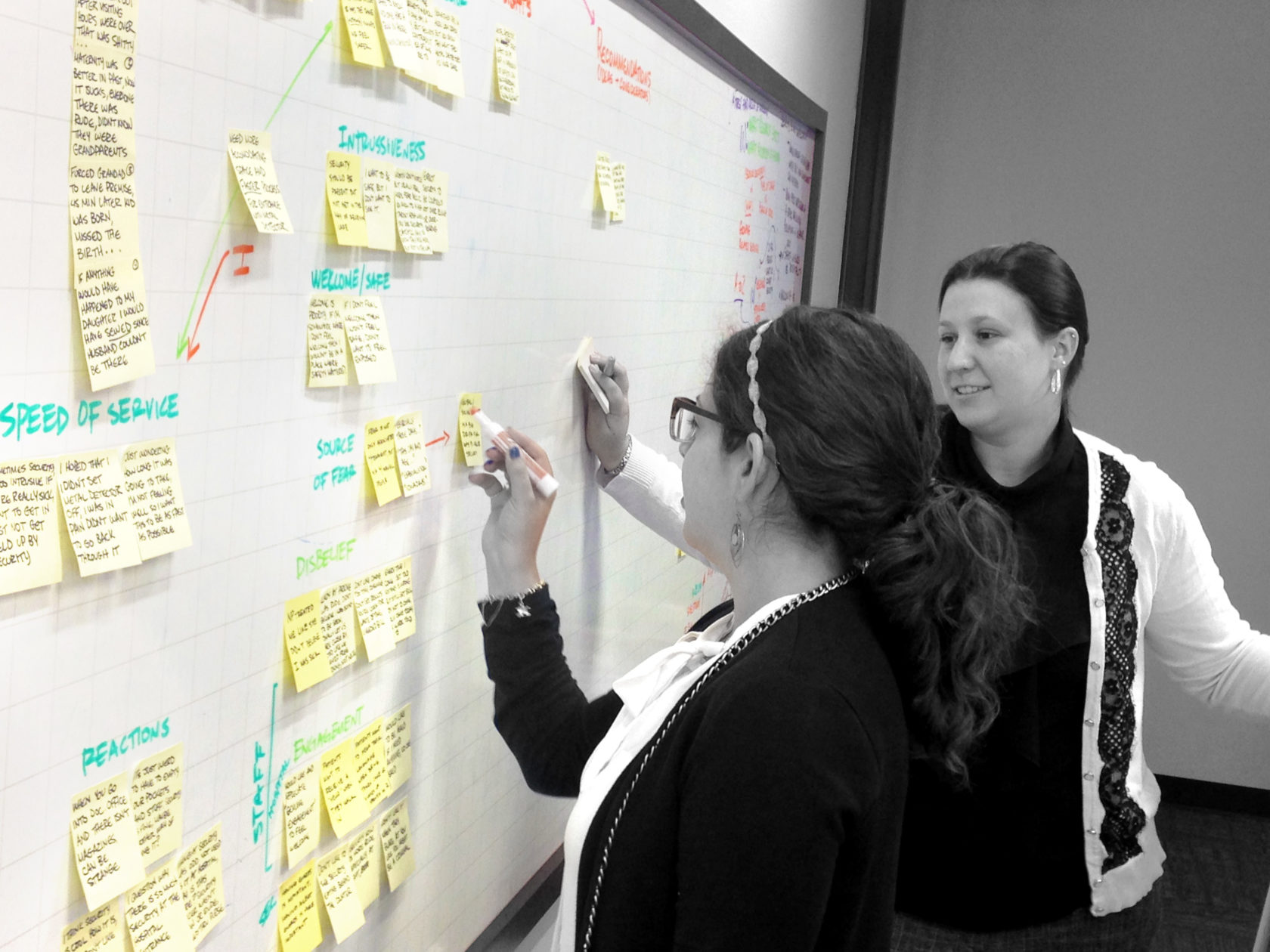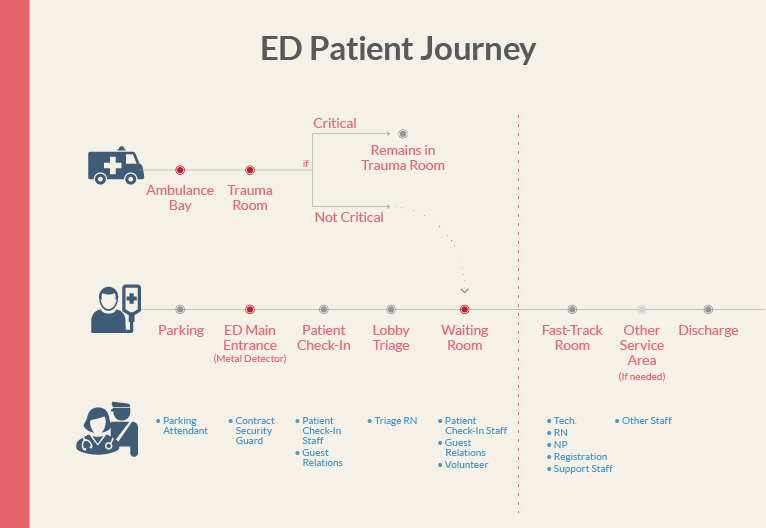Security vs. Hospitality: Can They Co-Exist?
A 16-week fellowship that explored the relationship between Security and Hospitality within 2 service areas of IU Health Methodist: Behavioral Health and the Emergency Department.
Full Research Document available upon request
Project Partners: Client: IU Health
Co-Researcher: Madison Stevens
Role: Design Researcher, Insight development, Proposal and Presentation Designer
Understanding Behavioral Health
After some initial secondary research, a visit to an unoccupied Behavioral Health (BH) unit was the first step in understanding the necessary considerations needed for a unit that attended to that patient population. The eye-opening immersion into the empty unit served as preparation for crafting and designing the tools used in the field research conducted in an active unit.
Because of the nature of the patients, researchers were only allowed to interact with staff to gather information through interviews and tools. Information relative to the patient’s use of the space was gathered through observations.

Visualizing Emergency Department Responses
Similarly, for the Emergency Department (ED) research, we had to abide by rules established by unit leadership in order to engage with patients without interrupting their care. For this research, an online survey served as a tool for us to lead the conversation and gather relevant data directly with the questions in order to be able to point back to trends and specific responses.
The ED research was complimented by research conducted with Patient Advisory Boards for other hospital sectors in order to broaden the range of patients we were able to interact with, in a remote fashion. A presentation was prepared in order to help meeting leaders elicit responses from the different PAC’s.

Insight and Document Development
As we began to gather the insights from both areas of research, we found that both contexts shared the common thread of Security and Hospitality. Through our document, we showcase specific research methods used to gather the data as well as a clear presentation of the Insights, Pain Points and Recommendations for both service areas.
Aside from the area specific recommendations, we also synthesized some overall takeaways that were presented to the Design and Construction department at IU Health.

Emergency Department Journey
Journey mapping served as one of the main methods to help understand the patient experience and pain points within the Emergency Department visit. The map presented the two alternate paths to reaching the Emergency Department Fast-Track service area, as well as the different staff members they could possibly interact with during the visit.

